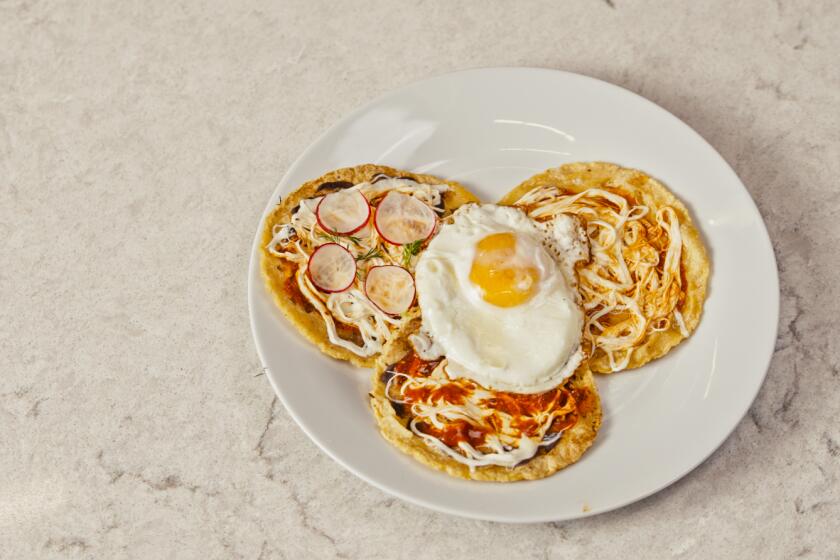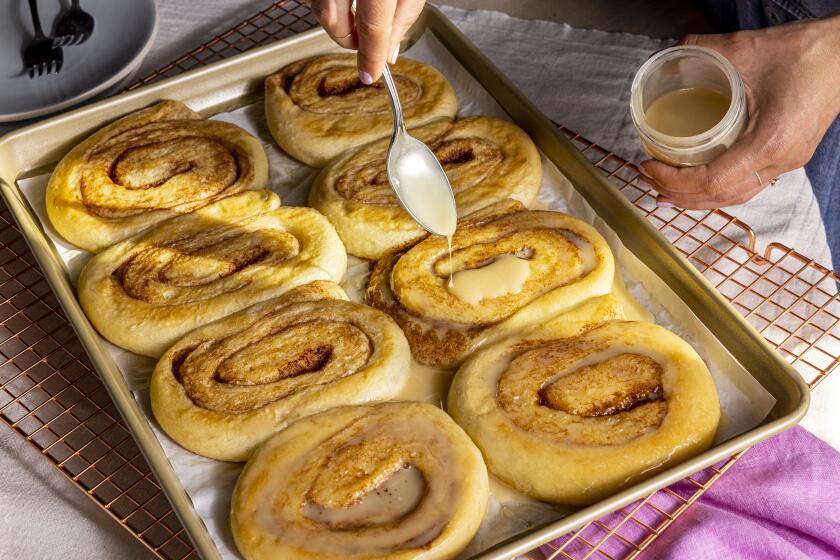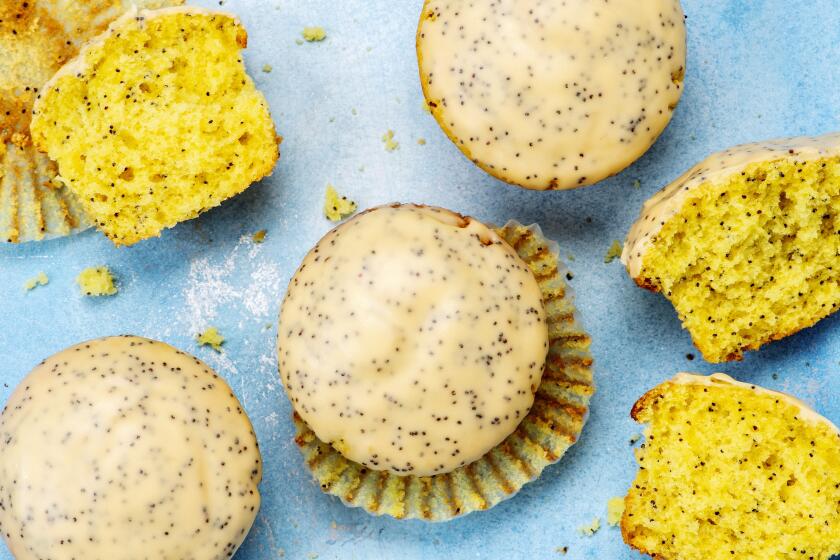Basic German pancake
I could tell you I love them because they’re so easy to make -- who doesn’t love a dish that comes together in less than half an hour? Or I could say it’s because of their delicate texture and flavor -- light and airy, but rich and almost nutty to the taste, it’s like biting into a delicious cloud.
But honestly? The reason I love these pancakes is because of the way they puff in the oven. They’re downright fun to watch.
Call them what you will -- Dutch babies, German pancakes, Dutch puffs -- they’re all about the souffle factor. They’re kind of like Yorkshire puddings or popovers, but supersized. Mix together a few ingredients and pour the batter into a hot buttered skillet, then put it in the oven and watch it swell. In minutes, these babies may puff to more than five times their original size.
It’s magical. Serve them quickly; like a souffle, the magic begins to deflate once they’re out of the oven.
Usually, German pancakes are served for breakfast, dusted with powdered sugar and maybe a squeeze of lemon, or perhaps with sauteed apple slices spooned in the center. Place the skillet on the table and watch as your guests tear in with forks or spoons, even fingers -- I suppose you could slice your masterpiece into wedges, but civilized manners tend to go out the window when that wonderful aroma starts wafting from the oven. And that’s just fine.
But why stop at breakfast? The basic batter is simple -- a little flour, a few eggs, some milk, maybe a pinch of salt or a little sugar to sweeten. I prefer to think of it as a blank canvas waiting to be flavored. Add some lemon zest or a touch of spice. Perhaps a little rosewater for floral notes or chopped toasted nuts for depth.
Recently I added chopped fresh rosemary and thyme for a savory take. I threw in finely grated Gruyere cheese and a few strips of crumbled bacon (cook the bacon in the skillet you’ll use for the pancake, using the rendered bacon fat in place of the butter as the pancake bakes). Not overly heavy, the cheese and bacon gave the pancake a subtle richness, perfect served alongside a simple salad as a lunch or light meal.
The trick with flavorings is to keep them delicate and use them sparingly. Don’t weigh the batter down, or you’ll trade “light and airy” for “dense and gummy.”
Thinking dessert? Try chocolate. Fold sweetened cocoa powder into the batter to flavor (I found chopped chocolate or chips to be too heavy), adding just a touch of espresso powder -- you won’t taste the coffee, but it will help to bring out the richness of the chocolate. Round out the flavorings with a little almond extract or orange zest (I used both), then toss it in the oven.
You might think the best part is eating the pancake fresh out of the oven, topped with a big scoop of ice cream. Although that is pretty magical, I still think the best part is simply watching it puff.
Heat oven to 425 degrees. In a bowl, whisk together the flour and salt. In a separate bowl, beat the eggs with the milk, then beat the egg mixture into the flour. Melt the butter in a 9- to 10-inch cast-iron skillet and pour the batter into the hot pan. Bake until the pancake is puffed and golden brown, 20 to 24 minutes. Serve immediately.
Get our Cooking newsletter.
Your roundup of inspiring recipes and kitchen tricks.
You may occasionally receive promotional content from the Los Angeles Times.
















